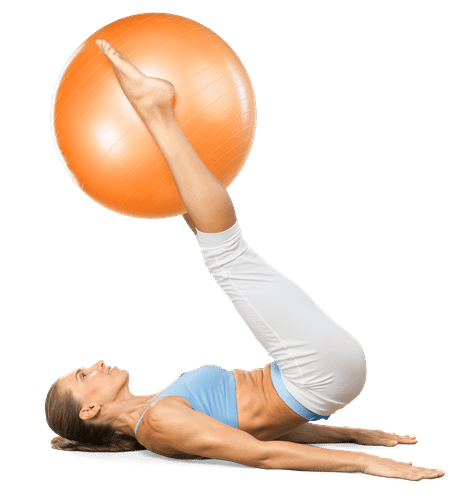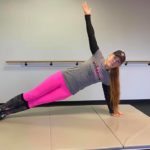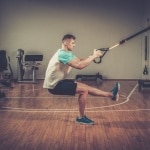
A 30-Minute Substitution May Save Years of Life
So much has been written lately, in the research journals and here in STEPS newsletters and blogs, on the hazards of sedentary living. It is now considered to be the primary reason for so many of the lifestyle-related diseases that haunt modern society – diabetes, heart disease, metabolic disease, and some cancers.
It is also considered to be one reason, despite increasing longevity overall, that morbidity carries many into their last years unproductively, unhappily. Yet studies do not show that exercising, even an hour a day, does not “completely alleviate the detrimental” effects of sedentariness.
 But How About Replacing Sedentary Time with Activity?
But How About Replacing Sedentary Time with Activity?
A German study analyzed data from the NHANES (a US survey of health and behavior) cohort, looking at over 3700 people over age 50 who’d provided data of at least one day’s use of an accelerometer, which measures activity by time and intensity. They followed these folks up for about 6.35 years on average. Almost 700 had died from all causes.
A most encouraging set of results ensued. Replacing 30 minutes of sedentary time, defined as prolonged sitting, such as TV watching or even work-related, with light activity was associated with a 14% reduced risk of death. And bumping up that intensity to moderate had a reduced risk of early death of 50%!
Furthermore, bumping up intensity from light to moderate yielded a 42% reduction of risk.
This kind of data reinforces the messages that have been promoted for the past 30 years or so that recommend getting in 30-60 minutes a day of exercise. But the question of intensity, and the question of how much exercise one needs to combat the amount of sitting we do in modern society, were unanswered.
Epidemiological studies of this sort, being easier and less expensive to run than controlled studies, combine large amounts of data which can be sifted and sieved for meaningful correlations.
While it cannot be proven that, in addition to your regular physical activity levels, replacing some of your sedentary time with light or moderate activity may reduce your risk by 14% – 50% of an early demise.
Just think how easy it would be to do something for 30 minutes a day that doesn’t kill you but makes you stronger.
Re-Thinking Creatine Supplements For Aging Adults

A Canadian study tested the hypothesis that a single 20 gram dose of a commercial brand of creatine vs a placebo taken 3 hours before a weight workout would enhance muscle endurance.
Nine healthy males, between 50 and 60 years old, familiar with but not actively engaged in a strength training program performed leg presses and chest presses to fatigue on two separate occasions, a week apart.
The results showed no difference in terms of repetitions to failure, demonstrating that a single dose of creatine before a workout would improve the performance of that workout.
This appears to negate the value of creatine supplementation. However, the authors noted a few factors that need to be considered. First, that almost all creatine supplementation is recommended to be taken for at least a week in order to see changes in muscle creatine storage, but generally a month.
Second, the dose (20g) may be too little to effect a change in serum creatine in older people, who may be more resistant to its effects on such short notice. Third, that any dose may need to be given closer to the workout. Fourth, that it needs to be taken for several weeks, in conjunction with a strength training program, to demonstrate benefits.
And finally, the sample size may have been too small to detect small differences in the effects of supplementation on a single workout.
In conclusion, this was not a great study. But the review of literature at the beginning of the study and in the discussion at the end of it noted many other studies that have shown the benefits of creatine for the aging population.
That this one study with all its faults showed neither benefit nor detriment should not deter some older exercisers from considering taking creatine.
Discuss it first with your physician, then your trainer, to see if you should try creatine or any other supplement, even extra protein, recognizing that both work best when you work out.
Recipe of the Month
Grilled Asian Salmon
(Courtesy of: www.mayoclinic.org)
 Ingredients
Ingredients
| 1 tablespoon sesame oil 1 tablespoon reduced-sodium soy sauce 1 tablespoon fresh ginger, minced 1 tablespoon rice wine vinegar 4 salmon fillets, each 4 ounce |
Directions
Combine sesame oil, soy sauce, ginger and rice wine vinegar in a shallow glass dish. Place salmon in the dish and coat it on all sides; then refrigerate it for 30 to 60 minutes, turning it occasionally to make sure it is evenly coated on all sides. Oil the grill and turn the heat up to medium-high. Cook salmon for 5 minutes on each side. If you stick a knife or fork into the center, you should see the pink flesh is “almost opaque.” It’s ready to serve!
Nutritional Analysis per Serving
| Calories: 185 Total fat: 9 g Saturated fat: 2 g Trans fat: Trace |
Monounsaturated fat: 3 g Cholesterol: 57 mg Sodium: 113 mg Total carbohydrate: 1 g |
Dietary fiber: Trace Added sugars: 0 g Protein: 26 g |
Download a PDF Version Here


 But How About Replacing Sedentary Time with Activity?
But How About Replacing Sedentary Time with Activity?
 Ingredients
Ingredients












